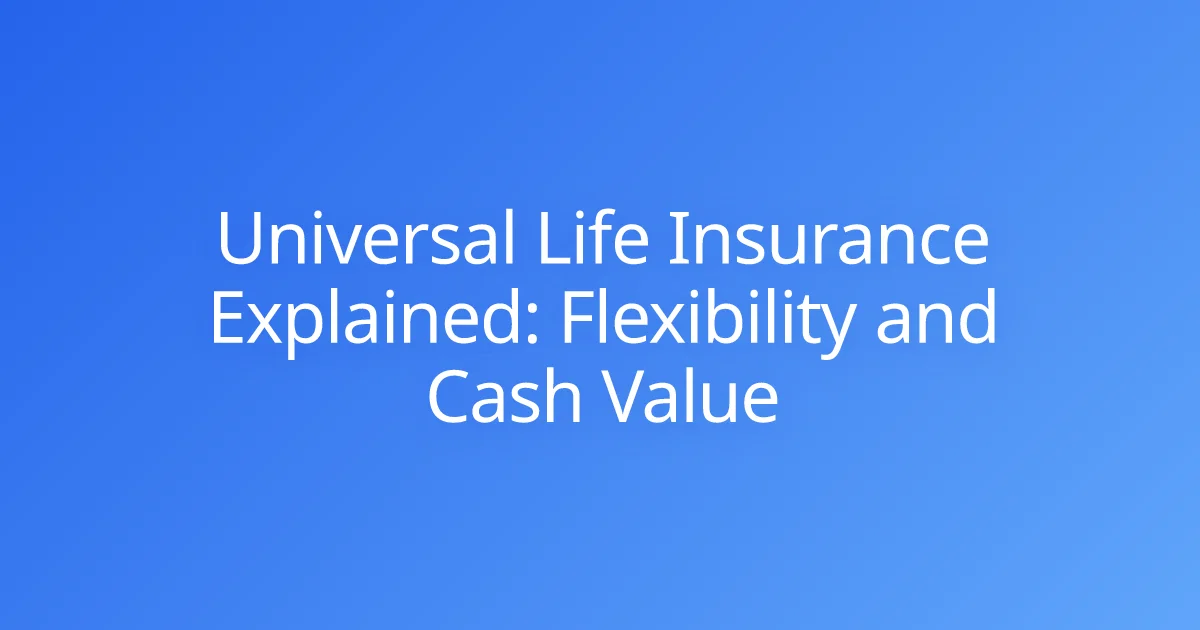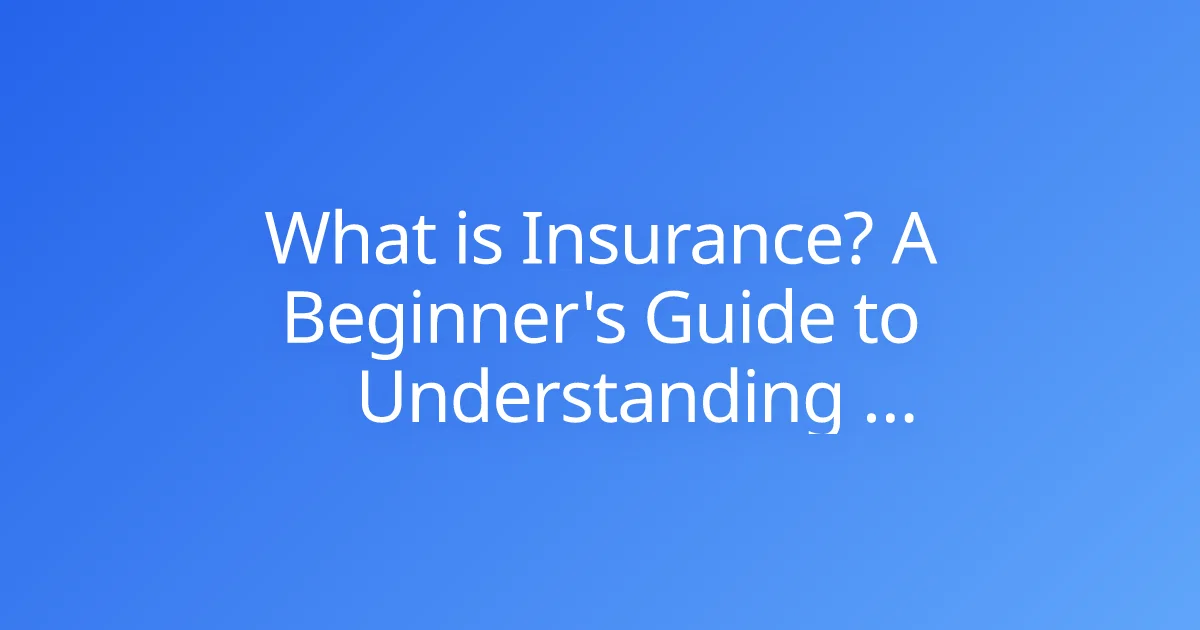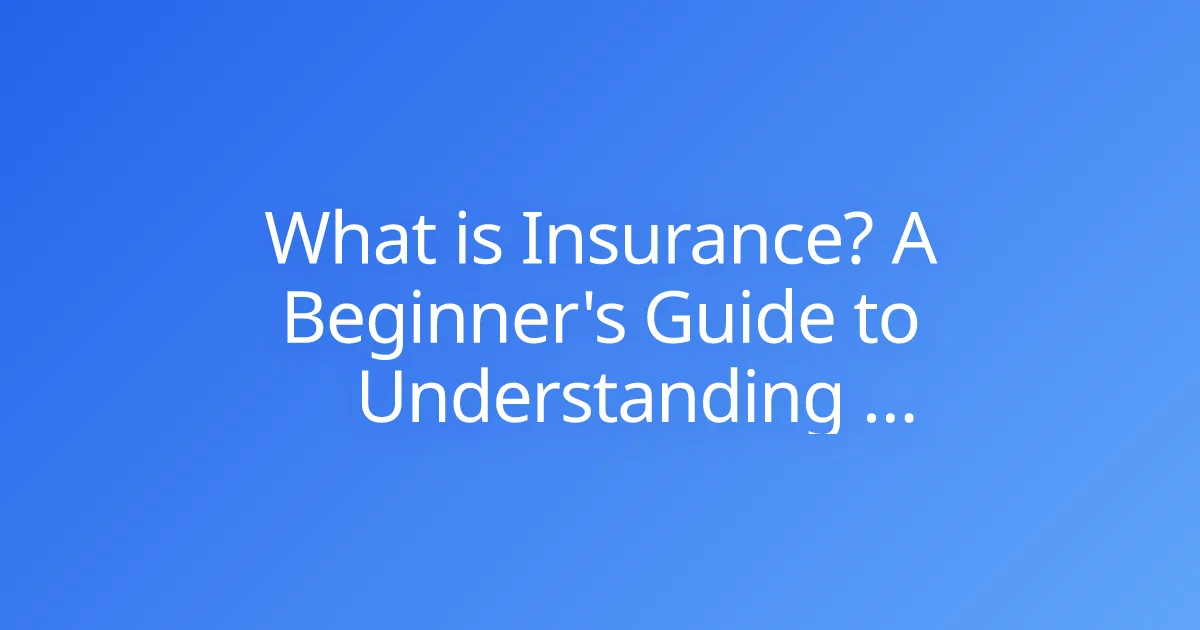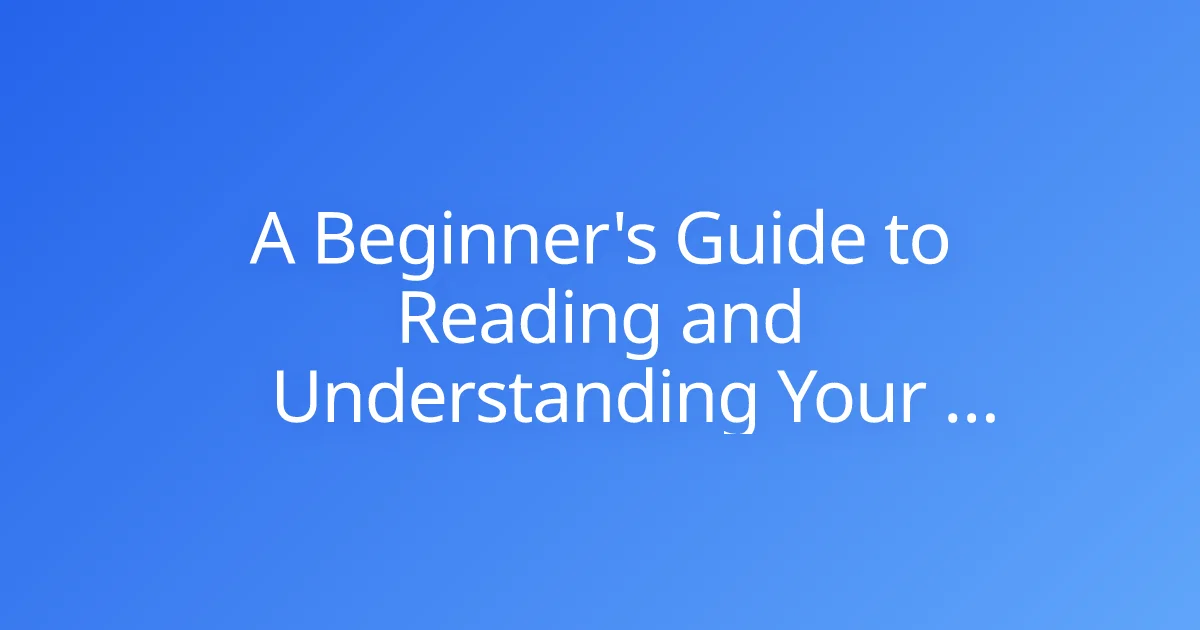Universal Life Insurance Explained: Flexibility and Cash Value
For many, life insurance seems like a straightforward concept: you pay premiums, and your beneficiaries receive a death benefit when you're gone. However, the world of permanent life insurance introduces layers of complexity, with terms like "cash value" and "flexible premiums" often leaving individuals scratching their heads. One such policy, Universal Life Insurance (UL), stands out for its unique blend of adaptable coverage and a savings component.
At The Policy Explainer, our mission is to simplify these intricate financial products. This comprehensive guide will illuminate the mechanics of Universal Life insurance, breaking down its core features, exploring the powerful flexibility it offers, and detailing how its cash value component can grow and be accessed. By the end, you'll have a clear understanding of whether this dynamic form of life insurance aligns with your long-term financial planning and protection goals.
What is Universal Life Insurance? The Core Concept
Universal Life Insurance (UL) is a type of permanent life insurance designed to offer lifelong coverage, unlike term life insurance which covers a specific period. What truly sets UL apart is its inherent flexibility concerning premiums and death benefits, coupled with a cash value component that grows over time.
Think of UL as having two main components operating beneath the surface:
- A Death Benefit: This is the primary purpose of any life insurance policy – the amount paid to your beneficiaries upon your passing.
- A Cash Value Account: This is a savings or investment component that grows over time on a tax-deferred basis.
Unlike whole life insurance, which has fixed premiums and a rigid structure, UL allows policyholders a degree of control over how much and when they pay premiums, and even how the death benefit can be adjusted. This adaptability is key to its appeal.
Understanding the Dual Nature: Death Benefit and Cash Value
The power of Universal Life insurance lies in the interplay between its death benefit and its growing cash value.
The Death Benefit Component
The death benefit is the guaranteed payout to your beneficiaries upon your death. With UL, you typically choose an initial death benefit amount, which can often be adjusted later to meet changing needs. This provides financial security for your loved ones, covering expenses like mortgage payments, education costs, or income replacement.
The Cash Value Component
This is where Universal Life gets interesting. A portion of each premium payment, after accounting for insurance costs and fees, is allocated to the cash value account. This cash value grows over time, typically earning interest based on a declared interest rate (for traditional UL), or tied to market indices (for Indexed UL), or investments (for Variable UL).
Key characteristics of the cash value:
- Tax-Deferred Growth: The growth within the cash value account is generally tax-deferred, meaning you don't pay taxes on the interest earned until you withdraw it or surrender the policy.
- Accessible Funds: As the cash value accumulates, you gain access to these funds through policy loans or withdrawals, offering a potential financial resource during your lifetime.
- Covers Policy Costs: The cash value can also be used to pay future premiums, offering significant premium flexibility if your financial situation changes.
The Power of Flexibility: How UL Adapts to Your Life
Universal Life insurance is often touted for its adaptability, allowing policyholders to adjust their policy to fit evolving financial circumstances.
Flexible Premiums
One of the most appealing features of UL is its flexible premiums. As long as your cash value is sufficient to cover the policy's monthly deductions (cost of insurance, administrative fees, etc.), you can:
- Vary Payment Amounts: Pay more in good financial times to build cash value faster, or pay less (or even skip payments) if you face financial hardship.
- Vary Payment Frequency: Choose how often you make payments.
- Fund with Cash Value: If your cash value grows substantially, it can potentially cover the future cost of insurance, allowing you to stop paying out-of-pocket premiums entirely.
This flexibility contrasts sharply with whole life insurance, which typically requires fixed, lifelong premium payments.
Adjustable Death Benefit
Policyholders usually have the option to increase or decrease their death benefit amount.
- Increasing the Death Benefit: If you have a new child, take on a larger mortgage, or your income increases, you might want more coverage. Increasing the death benefit typically requires new underwriting to assess your insurability.
- Decreasing the Death Benefit: If your financial obligations decrease (e.g., mortgage paid off, children grown), you might choose to reduce the death benefit, which can lower your cost of insurance and potentially free up more cash value.
Accessing Your Policy's Cash Value: Loans and Withdrawals
The accumulated cash value in a Universal Life policy isn't just a number; it's a financial resource you can access during your lifetime.
Policy Loans
You can borrow against your cash value at any time.
- No Credit Checks: Since you're borrowing your own money, no credit check is required.
- Interest Charged: The insurance company charges interest on the loan, but this interest is usually lower than what you'd pay for a traditional bank loan.
- Flexible Repayment: You are generally not required to repay the loan, but any outstanding loan balance (plus interest) will be deducted from the death benefit paid to your beneficiaries.
- Tax-Free Access: Policy loans are typically income tax-free, as they are considered a loan, not income.
Withdrawals
You can also make a partial withdrawal from your cash value.
- Reduces Death Benefit: Unlike a loan, a withdrawal permanently reduces your policy's death benefit by the amount withdrawn.
- Potential Taxable Event: Withdrawals are generally tax-free up to the amount of premiums you've paid into the policy. Any amount withdrawn above your cost basis (premiums paid) may be subject to income tax.
- Impact on Policy: Excessive withdrawals can deplete your cash value, potentially causing the policy to lapse if it can no longer cover the cost of insurance.
Both loans and withdrawals should be considered carefully, as they can impact the long-term health and benefit of your policy.
Types of Universal Life Insurance: Beyond the Basics
While the core principles of Universal Life insurance remain consistent, there are variations that offer different ways for the cash value to grow.
Traditional Universal Life (UL)
This is the standard form, where the cash value grows based on a declared interest rate set by the insurer. The interest rate usually has a minimum guaranteed rate.
Indexed Universal Life (IUL)
Indexed Universal Life (IUL) links the cash value growth to a stock market index (like the S&P 500) without directly investing in the market.
- Participation Rate: You participate in a percentage of the index's gains, usually capped at a certain rate.
- Floor: A guaranteed minimum interest rate (often 0%) protects your cash value from market downturns. This means you won't lose money due to market declines, though you may not gain any.
- Potential for Higher Growth: Offers the potential for higher cash value growth than traditional UL when the market performs well, while mitigating market downside risk.
Variable Universal Life (VUL)
Variable Universal Life (VUL) allows you to directly invest your cash value into various investment sub-accounts, similar to mutual funds.
- Investment Risk: The cash value and death benefit can fluctuate based on the performance of the underlying investments. This means you bear the investment risk and could potentially lose money if the investments perform poorly.
- Highest Growth Potential: Offers the highest potential for cash value growth but also the highest risk.
- Requires Market Savvy: VUL is often best suited for those comfortable with investment risk and who actively manage their investment choices.
Guaranteed Universal Life (GUL)
Guaranteed Universal Life (GUL) focuses less on cash value growth and more on providing a guaranteed death benefit for your entire life, similar to whole life, but often at a lower cost.
- Guaranteed to Age 100+: As long as you pay the scheduled premiums, the death benefit is guaranteed to remain in force until a specified age (often 100, 110, or even 121), regardless of interest rate fluctuations or market performance.
- Minimal Cash Value Focus: Cash value accumulation is secondary; the primary purpose is the death benefit guarantee.
Pros and Cons: Is Universal Life Insurance Right for You?
Understanding the advantages and disadvantages is crucial for deciding if Universal Life insurance is a good fit.
Advantages of Universal Life Insurance
- Flexibility: Adaptable premiums and death benefit amounts. You can adjust payments to fit changing financial circumstances.
- Cash Value Growth: Accumulates tax-deferred cash value that can be accessed during your lifetime through loans or withdrawals.
- Lifelong Coverage: Provides permanent coverage that doesn't expire, ensuring your beneficiaries are protected whenever you pass away.
- Potential for Higher Returns (IUL/VUL): IUL and VUL offer the potential for higher cash value growth compared to traditional UL or whole life, linking to market performance.
Disadvantages of Universal Life Insurance
- Complexity: UL policies, especially IUL and VUL, can be more complex to understand and manage than term or even whole life insurance.
- Fees and Charges: UL policies come with various fees, including cost of insurance charges, administrative fees, and surrender charges, which can eat into your cash value.
- Interest Rate Risk (Traditional UL): For traditional UL, if declared interest rates drop significantly, your cash value growth could slow, and you might need to pay higher premiums to keep the policy active.
- Investment Risk (VUL): With VUL, your cash value is directly tied to market performance, meaning you could lose principal if investments perform poorly.
- Potential for Lapse: If the cash value is depleted by fees, loans, or withdrawals, and you stop paying premiums, the policy could lapse, leaving you without coverage.
Key Considerations Before Choosing Universal Life
Before committing to a Universal Life insurance policy, ask yourself these crucial questions:
- What are my long-term financial goals? Am I looking for lifelong protection, a savings vehicle, or both?
- How comfortable am I with managing a policy? UL, particularly IUL and VUL, requires more oversight than other types of life insurance.
- What is my risk tolerance? Am I comfortable with potential investment risk (VUL) or the potential for fluctuating interest rates (Traditional UL)?
- What are my coverage needs? Do I need a fixed death benefit or one that can adapt over time?
- Have I considered the fees and charges? Understand how these costs will impact your cash value accumulation.
- Have I compared it to other options? Have you looked at term life insurance (for temporary needs) or whole life (for fixed, lifelong coverage with guarantees)?
Conclusion
Universal Life insurance is a powerful financial tool characterized by its unparalleled flexibility and the potential for accumulating cash value on a tax-deferred basis. It offers lifelong coverage and the ability to adjust to changing life circumstances, making it an attractive option for those seeking adaptable permanent life insurance.
However, its benefits come with a degree of complexity and, in some variations, market risk. By thoroughly understanding its core components – the death benefit, the growing cash value, premium flexibility, and the various types like IUL and VUL – you are empowered to make a highly informed decision. This knowledge is key to determining if Universal Life insurance aligns with your unique financial picture and provides the robust protection and financial growth you seek. Do you have more questions about how Universal Life might fit into your personal financial strategy?



